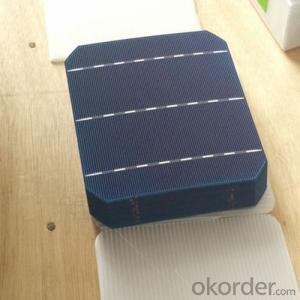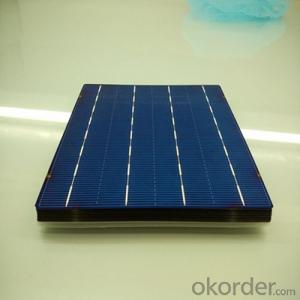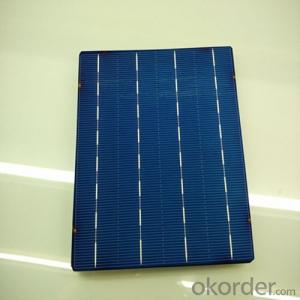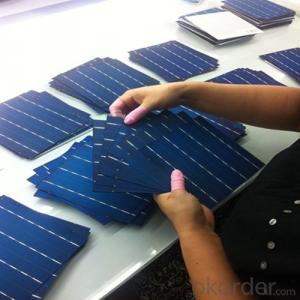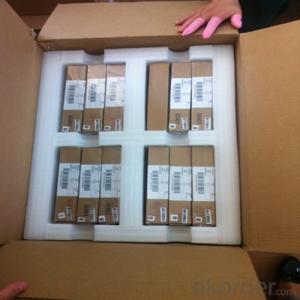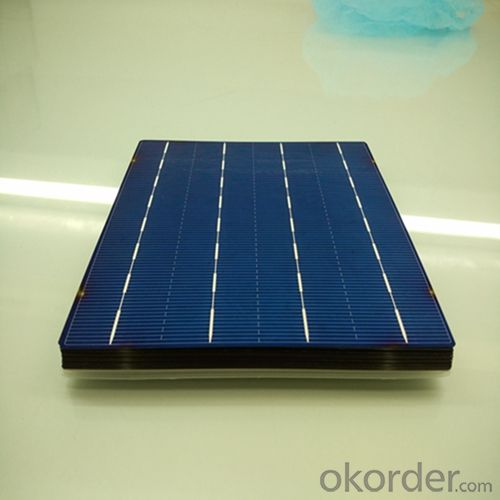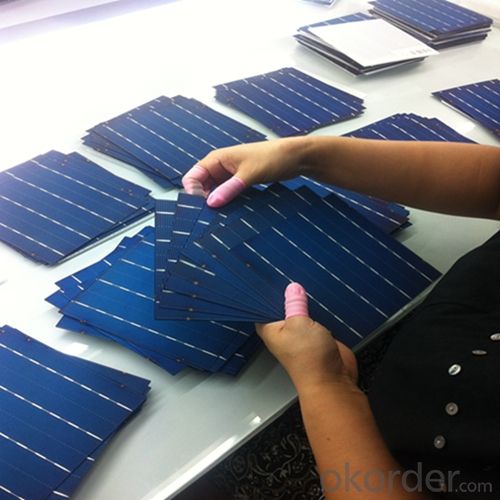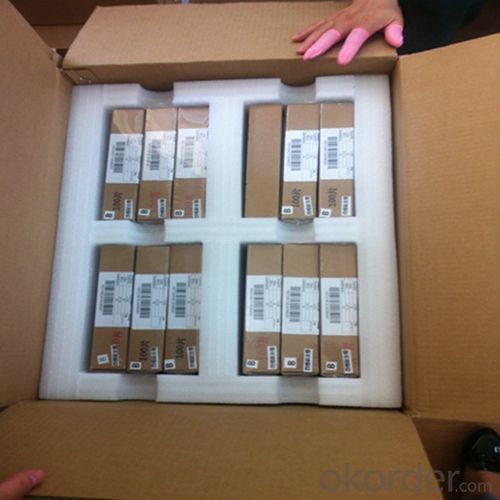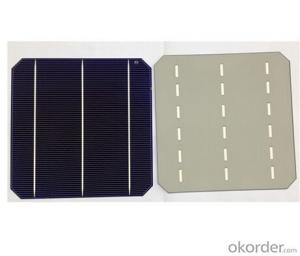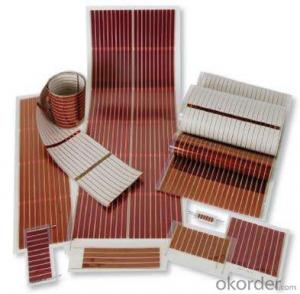Copper Indium Diselenide Solar Cells - Mono 156x156mm2 Made in Jiangsu
- Loading Port:
- Shanghai
- Payment Terms:
- TT OR LC
- Min Order Qty:
- 4999 watt
- Supply Capability:
- 650000 watt/month
OKorder Service Pledge
OKorder Financial Service
You Might Also Like
Benefits of Solar Power:
Now is a great time to go solar and harvest the power of the sun. Here is our top ten list of the benefits to installing solar power:
When installed, solar energy is free – no resources are consumed
Help to lessen our dependence on heavily polluting coal power stations
Fossil fuels can't last forever, future generations will appreciate the effort
Characteristic of Mono 156X156MM2 Solar Cells
You are gaining energy independence - add battery backup power for even greater energy security
The cost of electricity is only going to rise – insure against that rising cost
Quality solar power and water adds value and appeal to your home
Specifications of Mono 156X156MM2 Solar Cells
Solar PV systems are easily upgraded in future - aim to make your house a net energy producer!
Solar panels offer a long lifetime of low maintenance service, maybe 30-40 years
Your friends will think you're great!
You'll feel great for doing your bit for the environment!
Mechanical data and design
Format | 156mm x 156mm±0.5mm |
Thickness | 210μm±40μm |
Front(-) | 1.5mm bus bar (silver),blue anti-reflection coating (silicon nitride) |
Back (+) | 2.5mm wide soldering pads (sliver) back surface field (aluminium) |
Temperature Coefficient of Cells
Voc. Temp.coef.%/K | -0.35% |
Isc. Temp.coef .%/K | +0.024%/K |
Pm.Temp.coef. %/K | -0.47%/K |
Electrical Characteristic
Effiency(%) | Pmpp(W) | Umpp(V) | Impp(A) | Uoc(V) | Isc(A) | FF(%) |
18.35 | 4.384 | 0.526 | 8.333 | 0.63 | 8.877 | 78.39% |
18.20 | 4.349 | 0.526 | 8.263 | 0.63 | 8.789 | 78.54% |
18.05 | 4.313 | 0.525 | 8.216 | 0.63 | 8.741 | 78.32% |
17.90 | 4.277 | 0.524 | 8.161 | 0.625 | 8.713 | 78.04% |
17.75 | 4.241 | 0.523 | 8.116 | 0.625 | 8.678 | 77.70% |
17.60 | 4.206 | 0.521 | 8.073 | 0.625 | 8.657 | 77.36% |
17.45 | 4.170 | 0.519 | 8.039 | 0.625 | 8.633 | 76.92% |
17.30 | 4.134 | 0.517 | 8.004 | 0.625 | 8.622 | 76.59% |
17.15 | 4.096 | 0.516 | 7.938 | 0.625 | 8.537 | 76.80% |
17.00 | 4.062 | 0.512 | 7.933 | 0.625 | 8.531 | 76.18% |
16.75 | 4.002 | 0.511 | 7.828 | 0.625 | 8.499 | 75.34% |
16.50 | 3.940 | 0.510 | 7.731 | 0.625 | 8.484 | 74.36% |
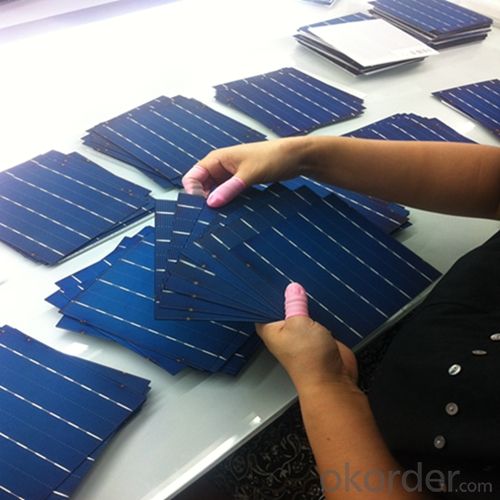
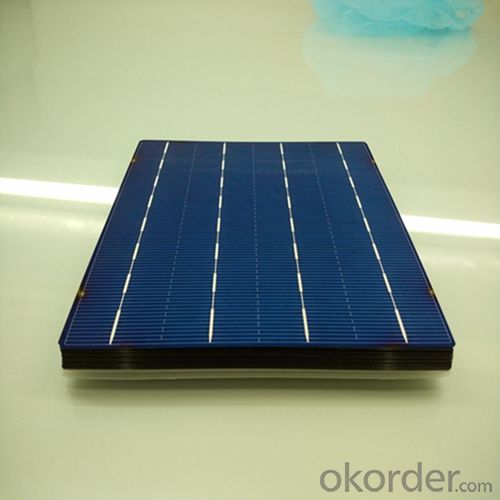
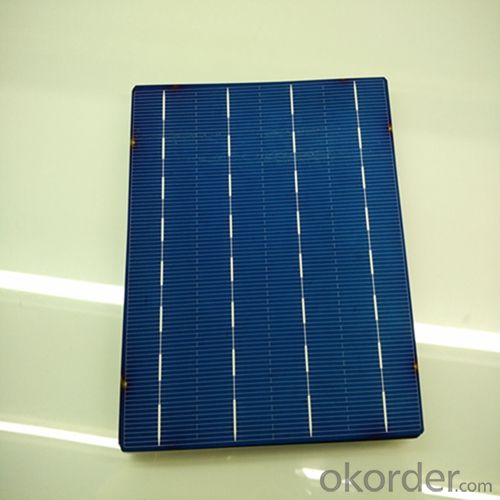
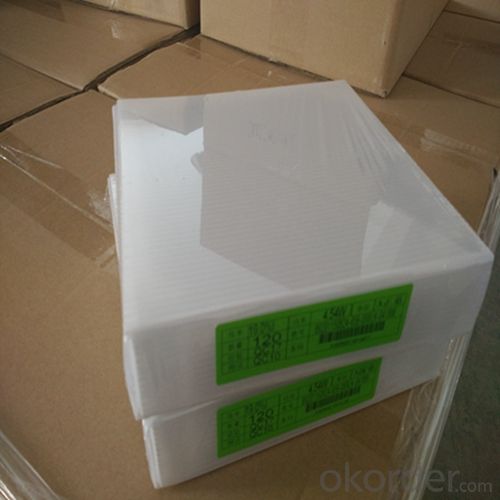
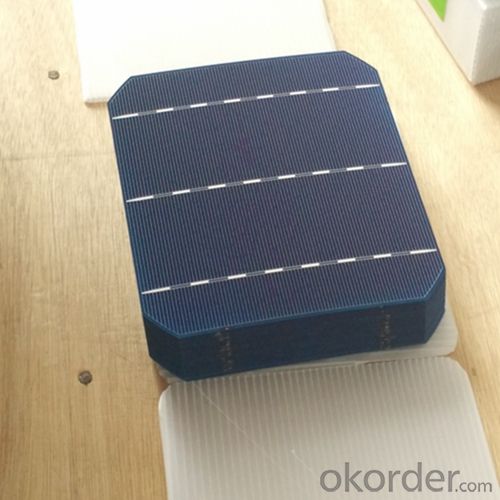
FAQ
Q: What price for each watt?
A: It depends on the quantity, delivery date and payment terms, generally Large Quantity and Low Price
Q: What is your size for each module? Can you tell me the Parameter of your module?
A: We have different series of panels in different output, both c-Si and a-Si. Please take the specification sheet for your reference.
Q: What is your size for each module? Can you tell me the Parameter of your module?
A: We have different series of panels in different output, both c-Si and a-Si. Please take the specification sheet for your reference.
- Q: What is the role of junction boxes in solar cell systems?
- Junction boxes in solar cell systems serve as important components that provide electrical connections and protect the solar panels. They house the electrical connections between multiple solar panels, ensuring a safe and efficient flow of electricity. Additionally, junction boxes act as a barrier, protecting the wiring and connections from environmental factors such as moisture and dust. Overall, junction boxes play a crucial role in the functionality and longevity of solar cell systems.
- Q: What is the role of solar cells in reducing carbon emissions?
- Solar cells play a crucial role in reducing carbon emissions by harnessing the power of sunlight to generate clean and renewable electricity. By converting sunlight directly into electricity, solar cells eliminate the need for burning fossil fuels, which are the primary source of carbon dioxide emissions. This clean energy source helps reduce our reliance on coal, oil, and natural gas, leading to a significant reduction in greenhouse gas emissions and combating climate change.
- Q: Can solar cells be used in military vehicles?
- Yes, solar cells can be used in military vehicles. They can help power various electronic systems and equipment, reducing reliance on traditional fuel sources and increasing energy efficiency. Additionally, solar cells can provide a sustainable and renewable energy solution for the military, especially in remote or off-grid operations.
- Q: How do solar cells perform in cloudy or overcast conditions?
- Solar cells are less efficient in cloudy or overcast conditions compared to sunny weather. This is because they rely on sunlight to generate electricity. However, solar cells can still produce some power in these conditions, although at a reduced rate.
- Q: Can solar cells be used on satellites?
- Yes, solar cells can be used on satellites. In fact, they are commonly used as the primary source of power for satellites in space.
- Q: Can solar cells be used to power electric vehicles?
- Yes, solar cells can be used to power electric vehicles. Solar panels can be installed on the roof or body of an electric vehicle to capture sunlight and convert it into electricity, which can then be used to charge the vehicle's batteries. This allows the vehicle to be partially or fully powered by solar energy, reducing reliance on traditional charging methods and promoting sustainability. However, the efficiency of solar cells and the limited surface area available on vehicles may currently limit their ability to solely power electric vehicles, but they can certainly contribute to extending their range and reducing their carbon footprint.
- Q: What is the role of tracking systems in solar cell installations?
- The role of tracking systems in solar cell installations is to optimize the amount of sunlight that reaches the solar panels throughout the day. These systems continuously monitor the position of the sun and adjust the orientation and tilt of the panels accordingly. By tracking the sun's movement, the panels can capture more sunlight and generate higher energy output, increasing the overall efficiency of the solar cell installation.
- Q: How do solar cells handle snow or ice accumulation?
- Solar cells can handle snow or ice accumulation by either melting the snow or ice due to their ability to absorb sunlight and convert it into electricity, or by allowing the snow or ice to slide off the surface due to their smooth and slippery design. Additionally, some solar panels are tilted at an angle, which helps prevent snow or ice buildup by allowing it to slide off more easily.
- Q: What is the expected degradation rate of a solar cell?
- The expected degradation rate of a solar cell can vary depending on various factors such as the type of solar cell, the quality of materials used, the environmental conditions, and the maintenance practices. On average, however, most solar cells experience a degradation rate of around 0.5% to 1% per year. This means that the efficiency of the solar cell decreases by this percentage over time. Proper maintenance and regular cleaning can help mitigate degradation and extend the lifespan of a solar cell.
- Q: How is the efficiency of a solar cell calculated?
- The efficiency of a solar cell is calculated by dividing the maximum power output of the cell by the input power from the sunlight.
Send your message to us
Copper Indium Diselenide Solar Cells - Mono 156x156mm2 Made in Jiangsu
- Loading Port:
- Shanghai
- Payment Terms:
- TT OR LC
- Min Order Qty:
- 4999 watt
- Supply Capability:
- 650000 watt/month
OKorder Service Pledge
OKorder Financial Service
Similar products
Hot products
Hot Searches
Related keywords
